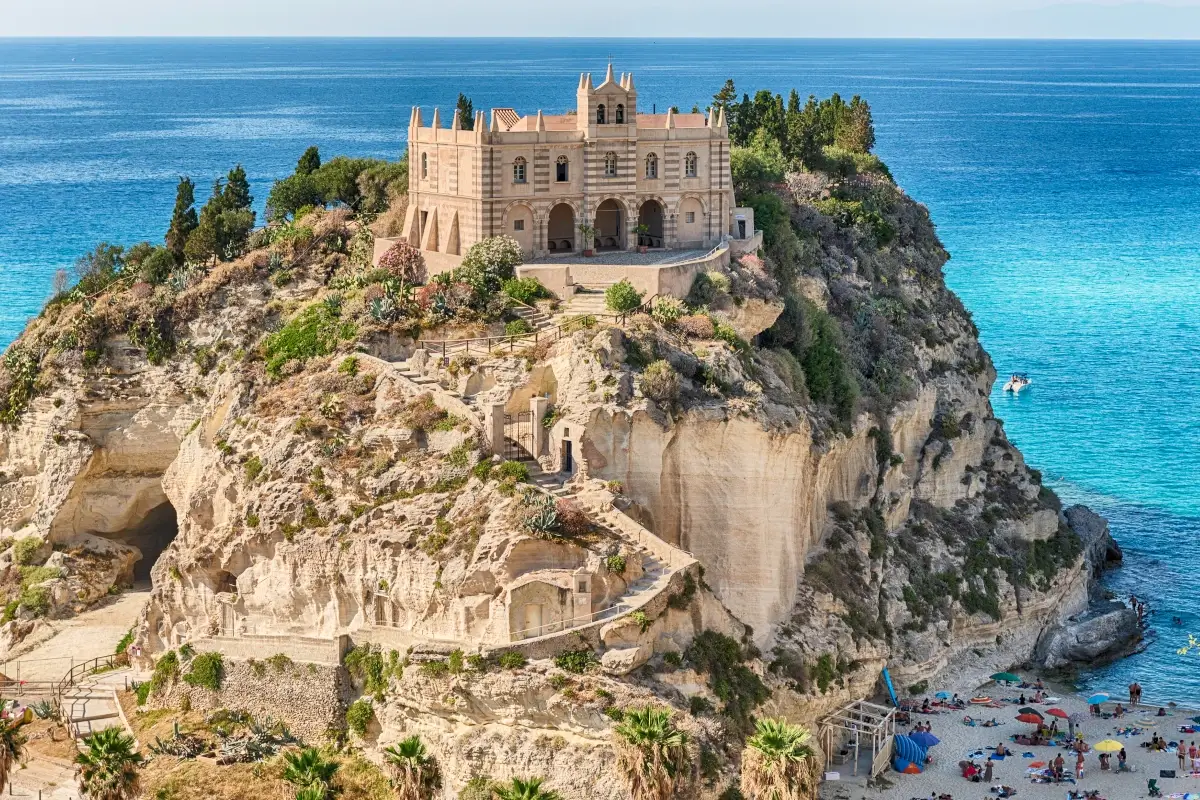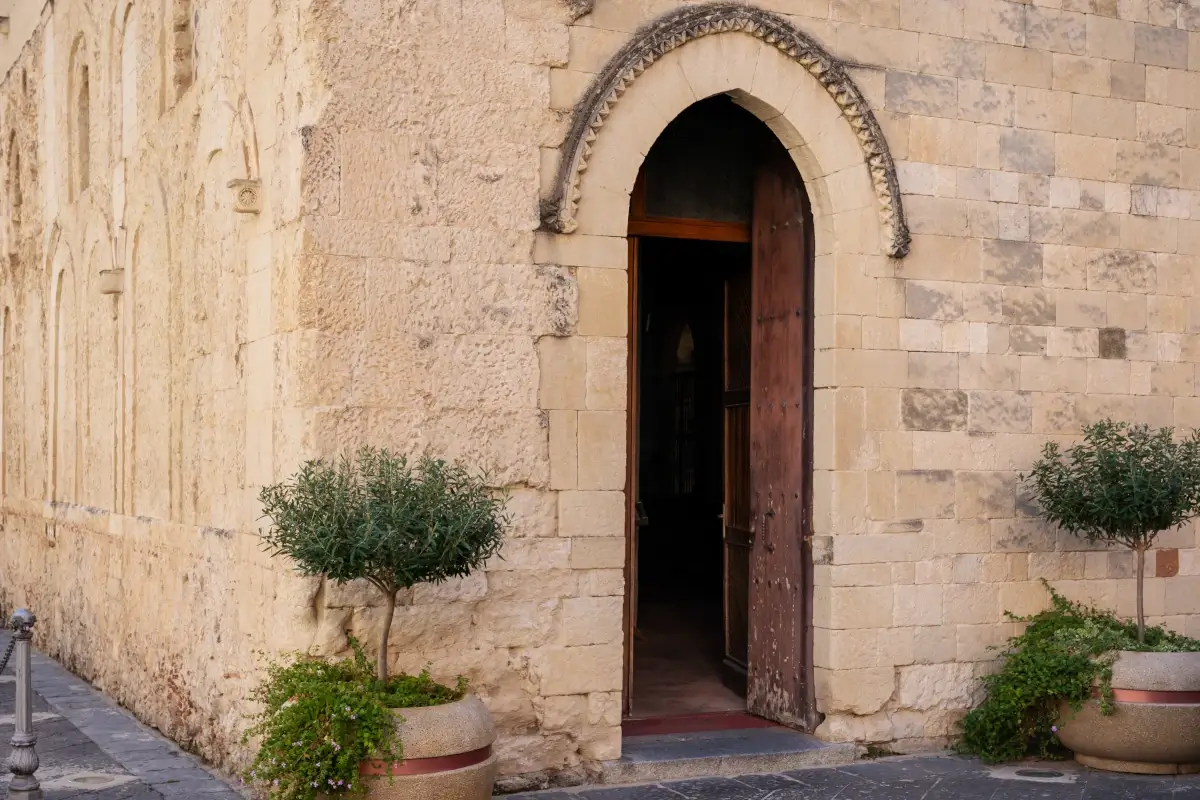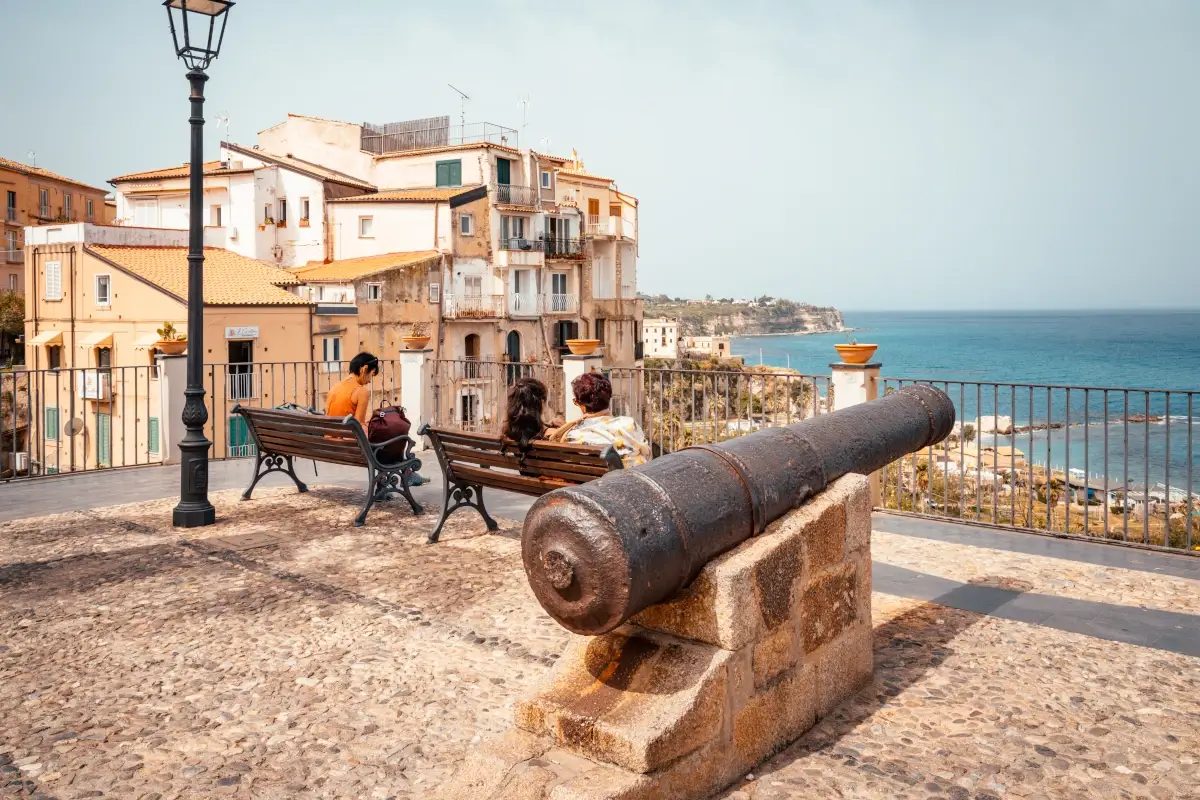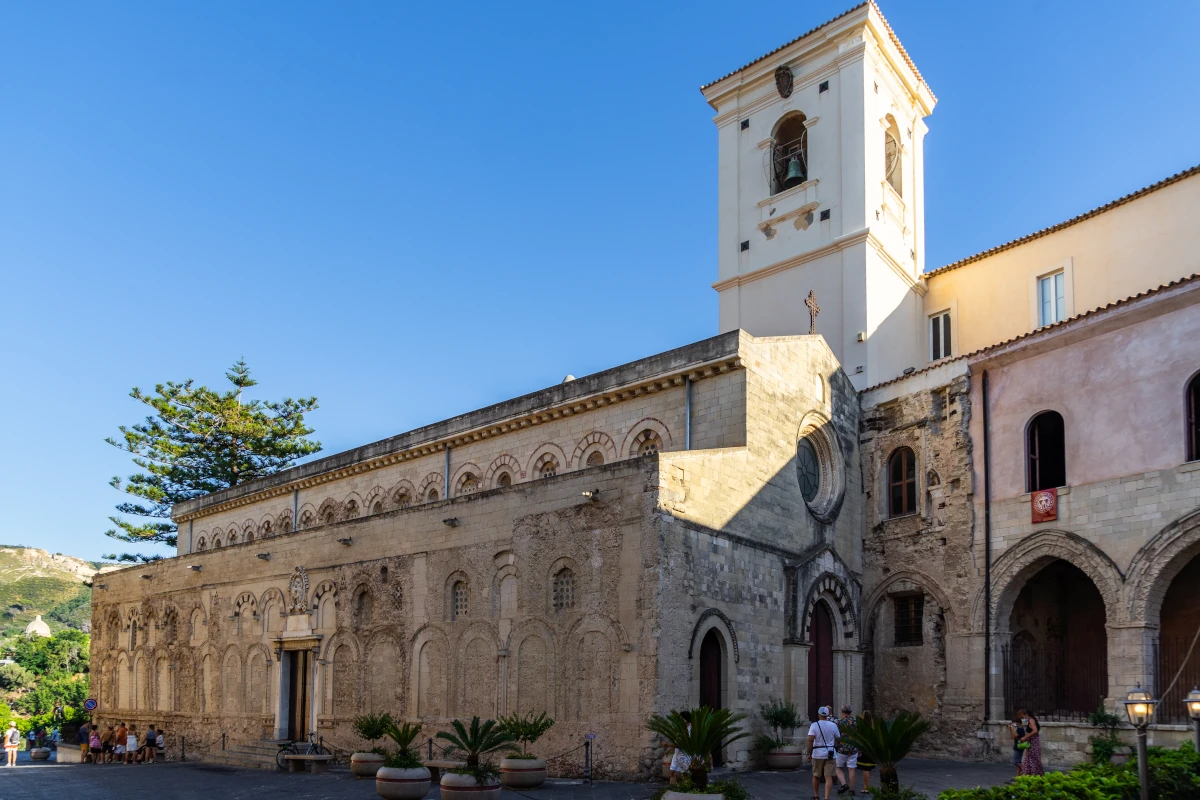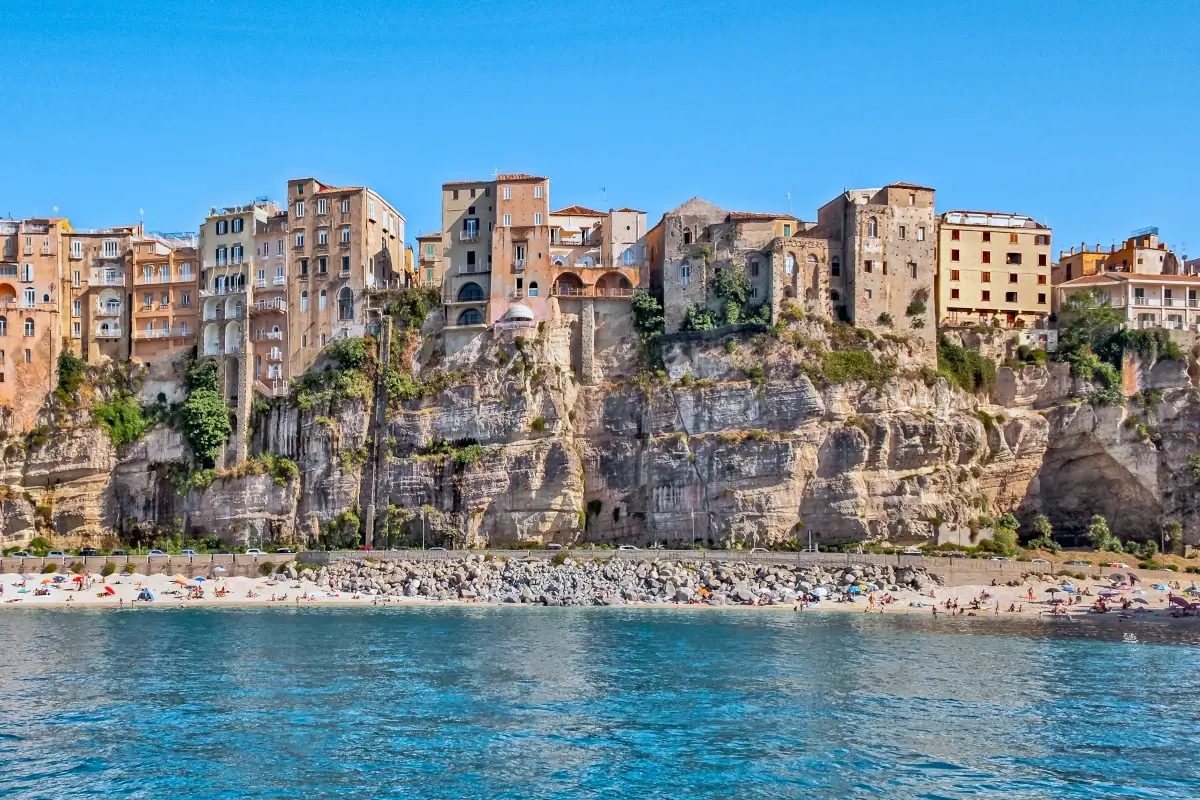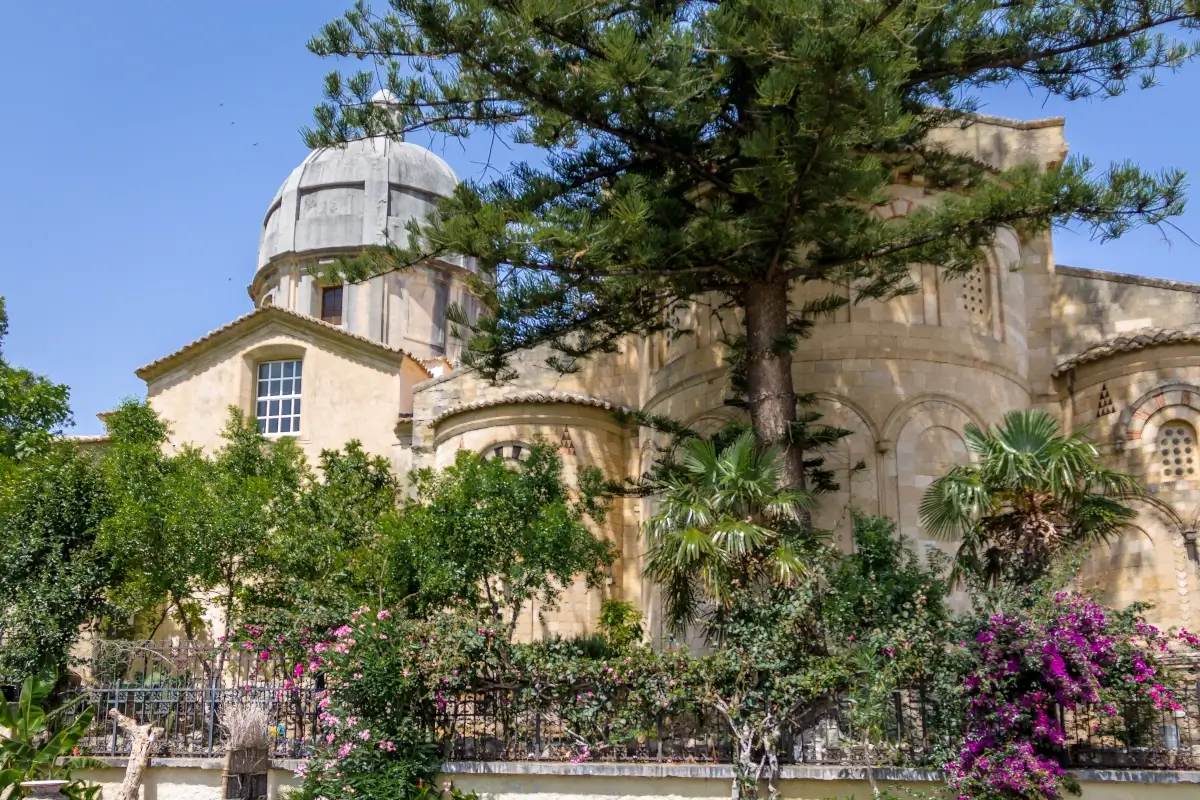PREHISTORY OF TROPEA
The origins of Tropea trace back to ancient times, with evidence suggesting that the area was inhabited as far back as the prehistoric era. Positioned strategically along the Tyrrhenian Sea, the region’s fertile lands and proximity to the coast made it an ideal settlement for early human communities. Archaeological findings, including tools and pottery fragments, indicate that prehistoric settlers thrived here, utilizing the natural resources of the land and sea.
Tropea’s location along ancient trade routes likely played a significant role in its development, connecting it to other early Mediterranean civilizations. Over time, these early communities laid the foundation for what would become a vibrant and historically rich town, shaped by the influences of the many cultures that passed through its shores.
HISTORY
Tropea’s history is as rich and layered as its breathtaking cliffs. Its story begins in the prehistoric era, where archaeological evidence suggests that early human communities settled in the area, drawn by its fertile lands and abundant coastal resources. These early inhabitants established a foundation for what would become a prominent Mediterranean town, shaped by centuries of cultural and historical influences.
The strategic location of Tropea along the Tyrrhenian Sea made it a vital point of interest for ancient civilizations. According to legend, Hercules himself is said to have founded Tropea during his travels across the Mediterranean. This mythological connection gave the town a sense of divine significance, and its prominence grew as it became a hub for trade and maritime activity.
During the Greek colonization of southern Italy, Tropea became an integral part of Magna Graecia, a network of prosperous Greek settlements. The Greeks brought advanced agricultural techniques, cultural practices, and architectural styles that left a lasting impression on the region. Later, the Romans took control of the area, further developing its infrastructure and integrating it into the expansive Roman Empire. Tropea’s strategic cliffs served as a natural fortress, protecting it from invaders and ensuring its importance as a coastal stronghold.
The medieval period was a golden era for Tropea, marked by the construction of its iconic Norman Cathedral, which still stands today as a testament to its historical significance. During this time, Tropea thrived as a center of commerce and culture, benefiting from its position along key trade routes. The town’s fortifications were strengthened to defend against frequent pirate attacks, and its streets were filled with bustling markets and vibrant life.
Under Norman rule, Tropea flourished further, becoming a hub for art, architecture, and learning. The Normans left behind a legacy of stunning structures, many of which can still be admired today. The town’s medieval charm, with its narrow streets and ancient buildings, continues to draw visitors from around the world.
In recent centuries, Tropea has remained a beloved destination for travelers seeking a blend of history, culture, and natural beauty. The town has worked tirelessly to preserve its historical landmarks while embracing modern tourism. Its historic center, perched dramatically on cliffs overlooking the Tyrrhenian Sea, offers a glimpse into its storied past, with every corner revealing a piece of its rich heritage.
From its prehistoric roots to its medieval splendor and modern-day allure, Tropea stands as a living testament to the resilience and beauty of southern Italy’s coastal towns. Whether exploring its ancient churches, strolling through its historic streets, or gazing out at the endless blue of the sea, visitors can feel the echoes of its remarkable history in every moment.
ARCHAEOLOGY
Tropea’s archaeological heritage offers a fascinating glimpse into the layers of history that shaped this coastal town. The region’s strategic location and fertile lands made it a prime settlement site for ancient civilizations, and remnants of these early societies can still be found today.
Archaeological discoveries in and around Tropea have revealed traces of prehistoric settlements, including tools and pottery fragments that date back thousands of years. These findings suggest that the area was inhabited long before the rise of classical civilizations, with early communities relying on the region’s natural resources for sustenance and trade.
The influence of the Greeks, who colonized southern Italy during the era of Magna Graecia, is particularly evident in the area’s archaeological record. Excavations have uncovered artifacts such as ceramics, coins, and architectural remnants that highlight the cultural and economic significance of Tropea during this period. The Greeks not only brought advanced craftsmanship to the region but also established trade networks that connected Tropea to other parts of the Mediterranean.
Roman contributions to Tropea’s archaeological landscape are equally significant. The Romans developed the town’s infrastructure, including roads and aqueducts, and fortified its cliffs to defend against invasions. Evidence of Roman engineering and urban planning can be seen in the foundations of ancient structures and in the layout of the historic center.
For archaeology enthusiasts, Tropea’s surrounding areas also hold treasures waiting to be explored. Nearby sites, such as the ruins of ancient temples and settlements, provide a broader context for understanding the historical development of the region. These discoveries not only highlight Tropea’s importance as a historical hub but also underscore its enduring connection to the cultures and civilizations that have shaped the Mediterranean.
